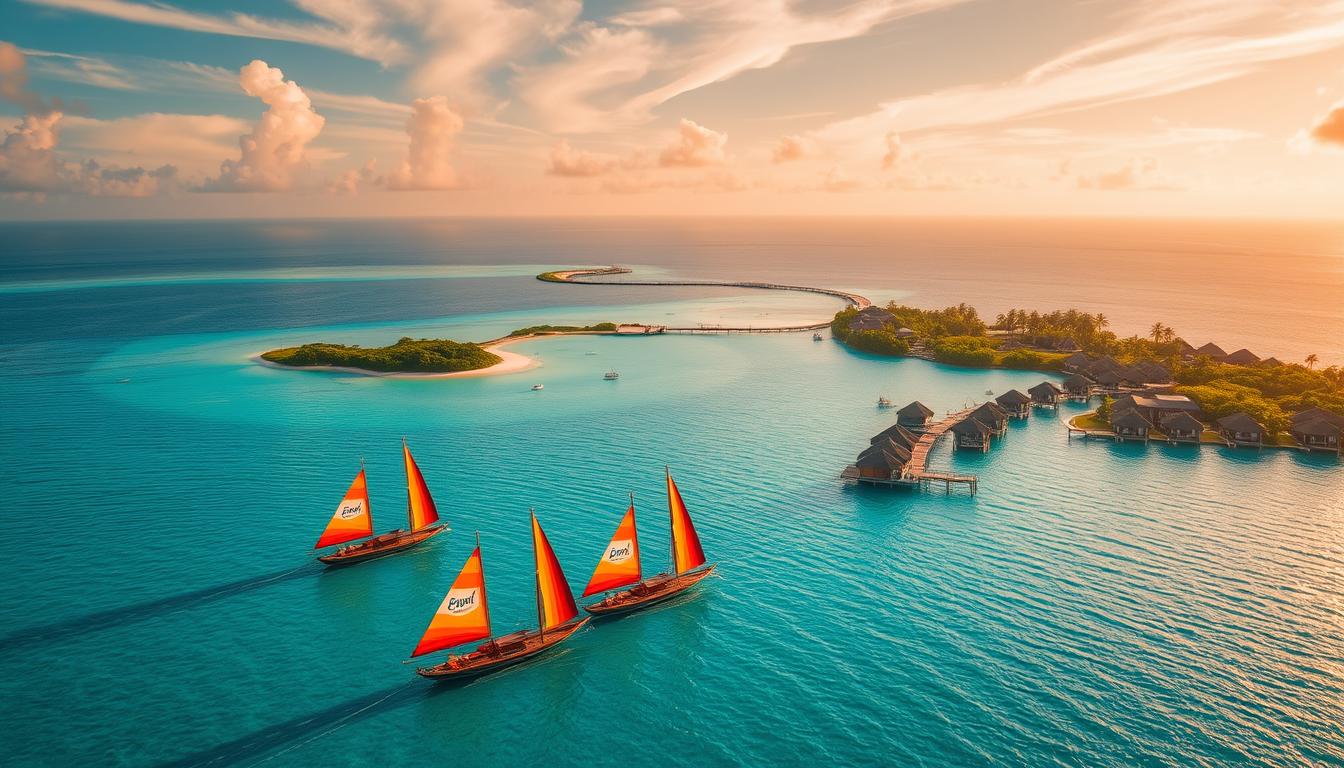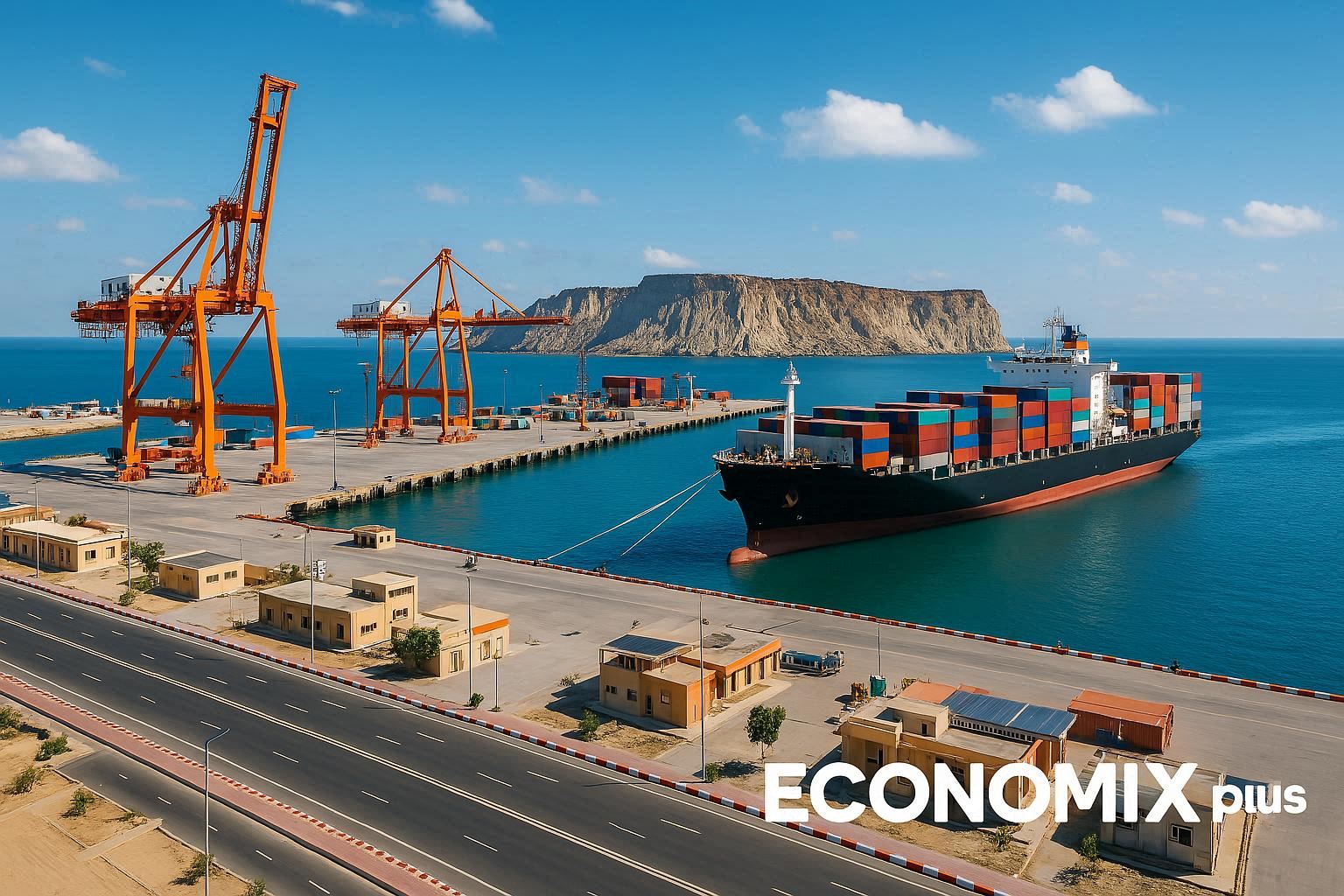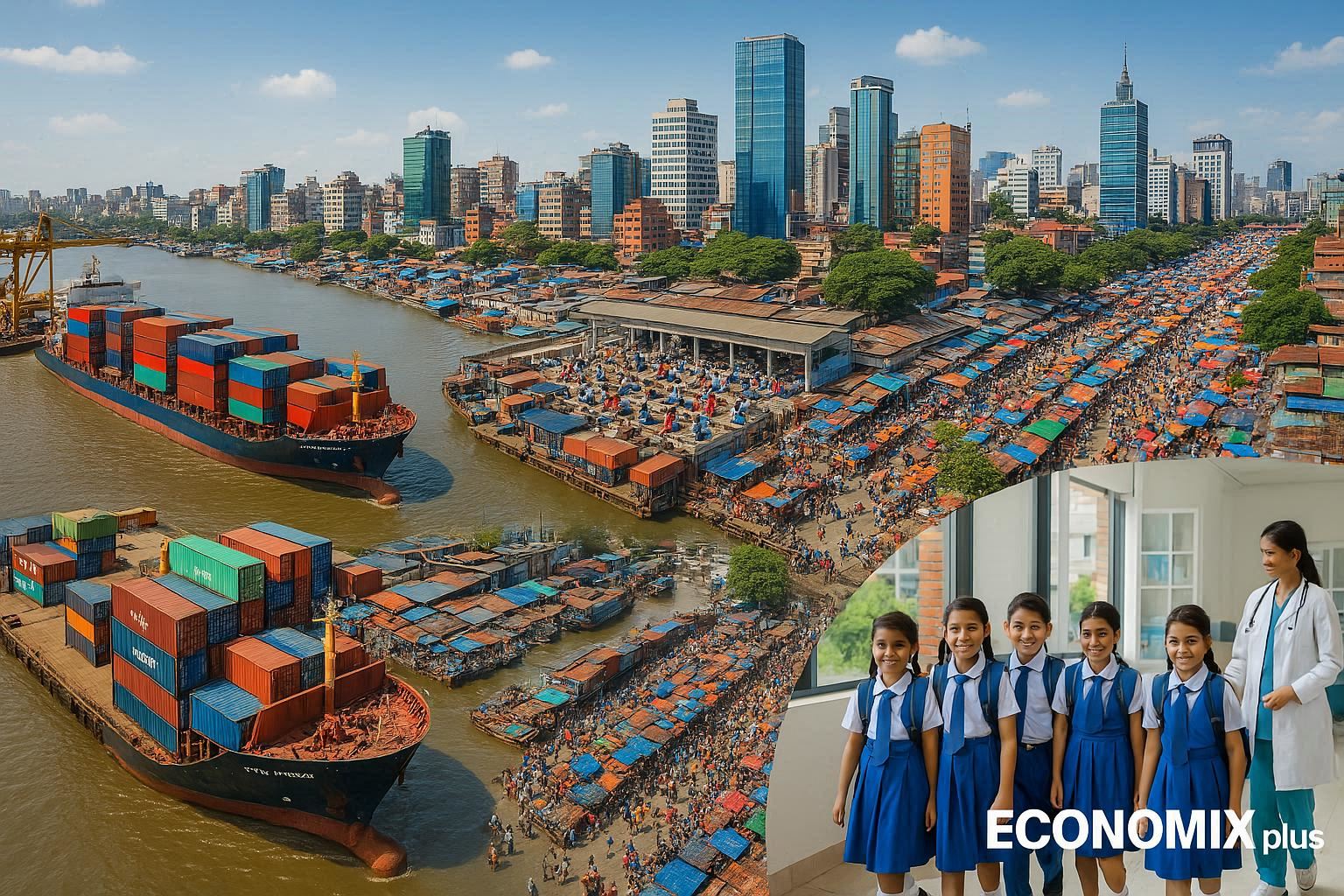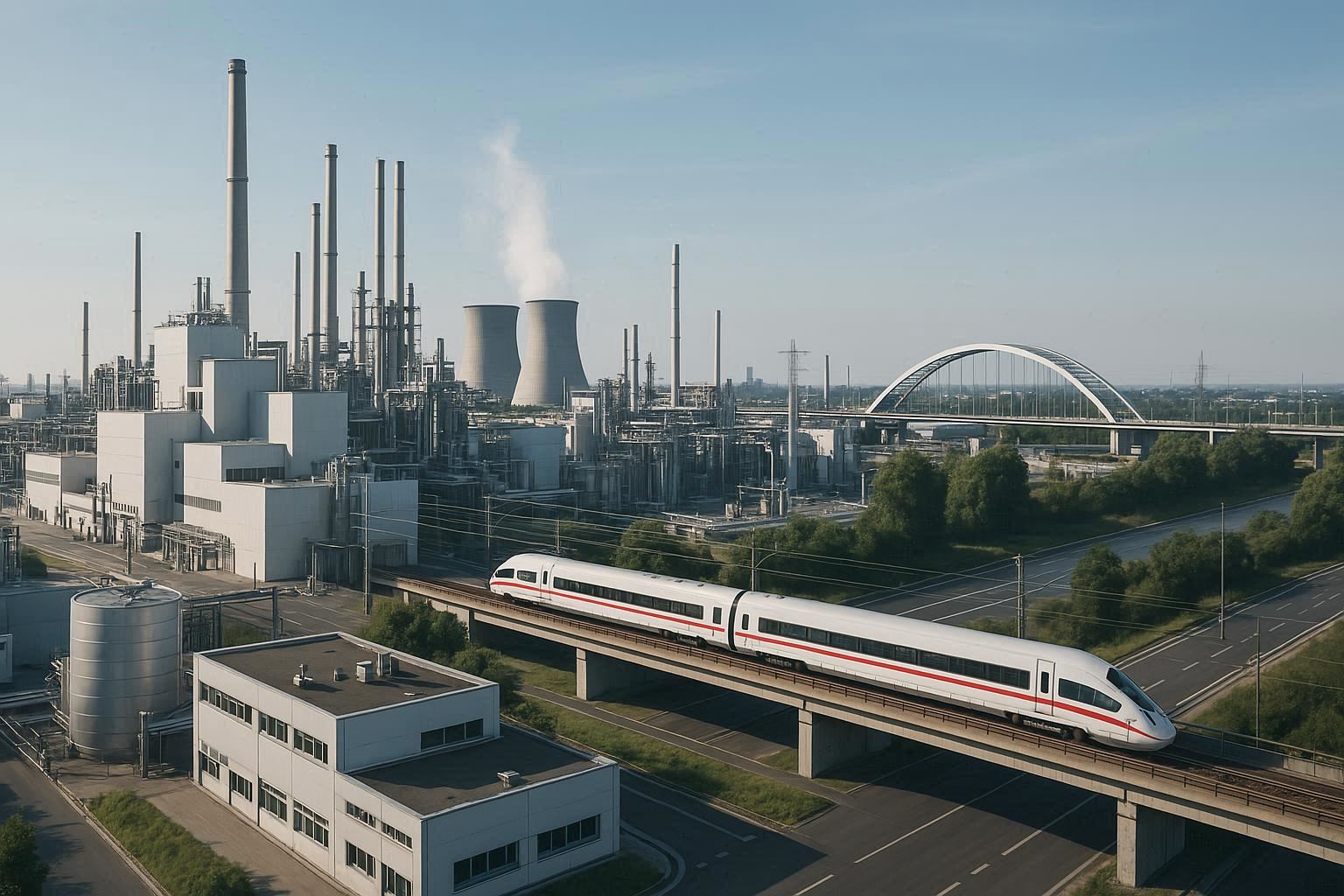The Maldives, a small archipelago in the Indian Ocean, is known for its pristine beaches and luxury resorts. The country’s tourism industry has transformed it into a premier global tourism destination since the 1970s.
Tourism accounts for over 28% of the country’s GDP and brings in about 60% of foreign exchange receipts. The tourism sector is the largest economic sector in the Maldives, contributing over 30% to the country’s GDP and creating many jobs for Maldivians.
Key Takeaways
- The Maldives represents one of the world’s most tourism-dependent economies.
- The country’s economy is vulnerable to external factors like climate change.
- Tourist arrivals in the Maldives increased by 8.9% in 2024, reaching an all-time high.
- The tourism sector is the primary source of foreign exchange earnings.
- The Maldives faces significant challenges in diversifying its economy beyond tourism.
The Maldives’ Tourism-Driven Economic Structure
The Maldives has a tourism-driven economic structure that is characterized by high-end resorts and exclusive experiences. This unique economic model has been developed to cater to the growing demand for luxury tourism.
Tourism’s Contribution to GDP and National Income
The tourism sector is the largest contributor to the Maldives’ GDP and national income. According to recent data, tourism accounts for a significant percentage of the country’s GDP, making it a crucial component of the national economy. The revenue generated from tourism is used to fund various public services and infrastructure projects.
The sector also provides employment opportunities for a large number of people, both directly and indirectly. Many locals are employed in the resorts, while others benefit from tourism-related activities such as fishing and handicrafts.
Foreign Exchange Earnings and Economic Impact
The Maldives earns a significant amount of foreign exchange from tourism, which is used to import goods and services. The influx of foreign currency helps to stabilize the local currency and supports the overall economy. The infrastructure development in the Maldives, including the construction of new resorts and island facilities, is also driven by the tourism industry.
The “One-Island, One-Resort” Tourism Model
The Maldives has pioneered the “one-island, one-resort” concept, where each resort occupies its own private island. This model offers guests privacy and exclusivity, making it a signature experience for the country. The concept has proven to be particularly resilient during health crises, as the natural isolation of each resort island facilitates effective health protocols and visitor confidence.
Future projects continue to follow this successful model, incorporating sustainability features to address climate change concerns and meet evolving tourists’ expectations.
How Does the Maldives’ Economy Rely on Tourism as Its Main Income Source?
The tourism sector is the lifeblood of the Maldives’ economy, contributing significantly to its GDP. The country’s reliance on tourism has grown over the years, with tourist arrivals reaching an all-time high of 2.05 million in 2024, representing an 8.9% increase.
Luxury and Honeymoon Tourism
The Maldives is renowned for its luxury resorts and honeymoon destinations. The country’s pristine beaches, crystal-clear waters, and high-end amenities attract high-spending tourists, particularly from China, Russia, and Western Europe.
Water Sports and Eco-Tourism
In addition to luxury tourism, the Maldives is also promoting water sports and eco-tourism. Activities such as snorkeling, diving, and fishing are becoming increasingly popular, allowing tourists to experience the rich marine biodiversity of the Maldives.
Tourist Arrivals and Spending Patterns
Tourist arrivals have demonstrated a strong recovery post-pandemic, with a significant increase in visitors from key markets. However, spending per tourist has been declining, potentially moderating medium-term growth prospects for the tourism sector.
| Year | Tourist Arrivals | GDP Growth |
|---|---|---|
| 2019 | 1.7 million | – |
| 2020 | 0.55 million | -67.4% |
| 2024 | 2.05 million | 5.5% |
The government is working to extend the average length of stay and increase per-visitor spending to maximize economic benefits. Digital marketing initiatives and strategic airline partnerships have been crucial in rebuilding tourist arrivals following the pandemic disruption.
Economic Diversification Beyond Tourism
The Maldivian government is implementing strategies to expand its economy beyond tourism. This move aims to reduce the country’s reliance on a single industry and promote economic resilience.
The Fishing Industry as the Second Economic Pillar
The fishing industry has long been a significant contributor to the Maldivian economy, serving as a vital source of foreign exchange earnings. The government continues to support this sector through sustainable fishing practices and modernizing the industry’s infrastructure. As a result, the fishing industry remains a crucial component of the country’s economic diversification efforts.
Agriculture and Construction Sectors
In addition to fishing, the Maldives is also focusing on developing its agriculture and construction sectors. Efforts are being made to improve agricultural productivity and food security, while the construction sector is experiencing growth due to infrastructure development projects. These sectors contribute to the country’s GDP and provide new employment opportunities.
Information Technology and Financial Services Development
The government is promoting Information and Communication Technology (ICT) as a means to diversify the economy. Initiatives include improving internet connectivity across islands, developing e-government services, and encouraging start-ups. The Maldives is also expanding its finance sector, particularly in Islamic banking, to align with the country’s Muslim faith. As noted in a report by the Asian Development Bank, “diversifying the Maldivian economy is crucial for its sustainable.” These development efforts are expected to enhance the country’s economic resilience.
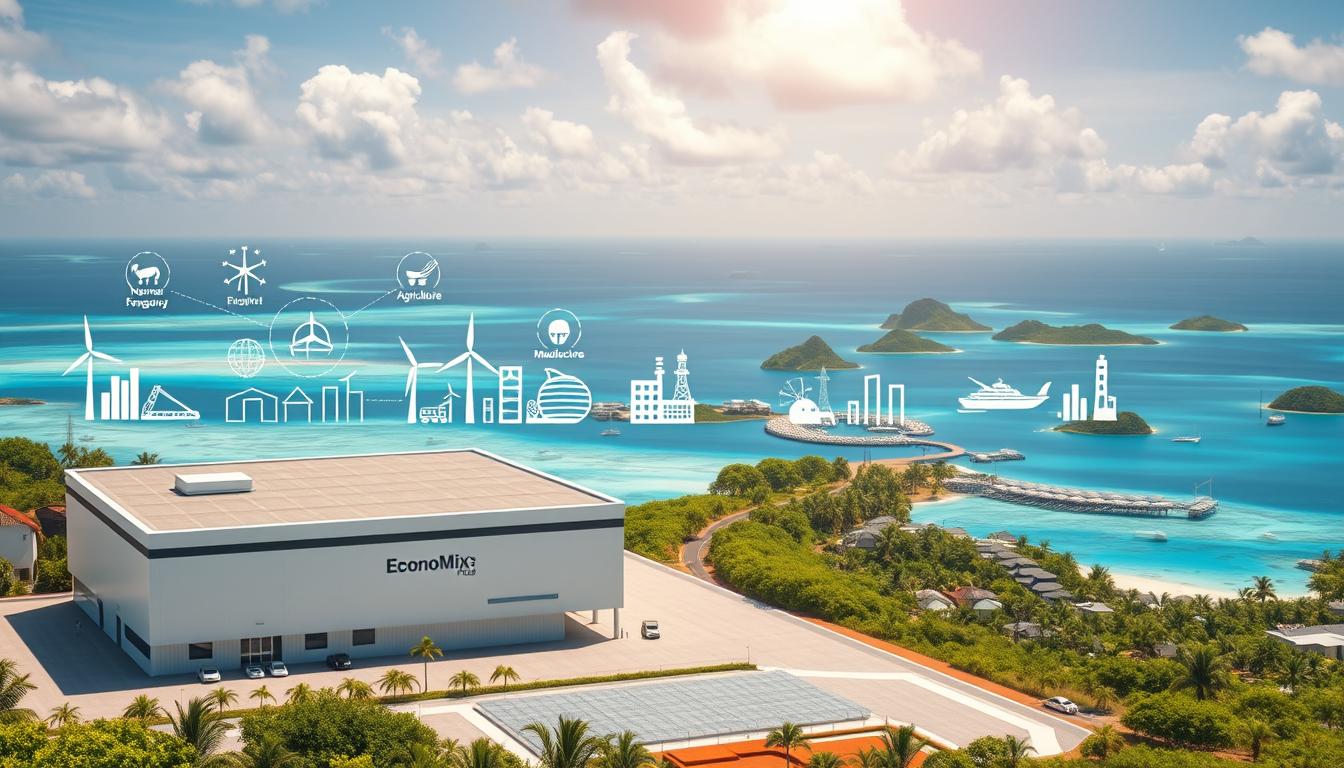
Challenges and Future Outlook for the Maldivian Economy
The Maldives’ economic future is uncertain due to its dependence on tourism and vulnerability to rising sea levels. As the lowest-lying nation in the world, the Maldives is highly susceptible to the impacts of climate change, which threatens not just land but also infrastructure, freshwater sources, and tourism facilities. The country’s fiscal situation is precarious, with a widening fiscal deficit of 12.3% of GDP in 2024 and growing debt driven by infrastructure projects and subsidies.
The government has announced a fiscal adjustment reform agenda, focusing on reducing blanket subsidies and replacing them with targeted transfers, rationalizing capital spending, and reforming state-owned enterprises. Additionally, the development of renewable energy represents both an economic opportunity and a necessity, reducing dependence on imported fossil fuels while supporting climate resilience. For more information on the Maldives’ economic overview, visit the World Bank’s Maldives country page.
Despite these challenges, the Maldives has demonstrated remarkable economic resilience, with tourism rebounding strongly after the pandemic. The country’s economic outlook remains cautiously positive if fiscal reforms are implemented and diversification efforts reduce dependence on tourism as the primary income source. The Maldives also struggles with health system challenges, including the high cost of providing services across dispersed islands and increasing non-communicable disease burden.
